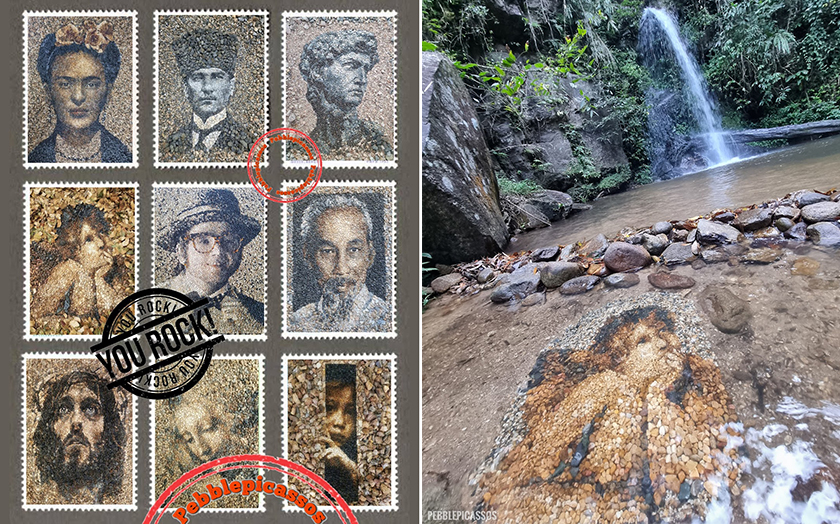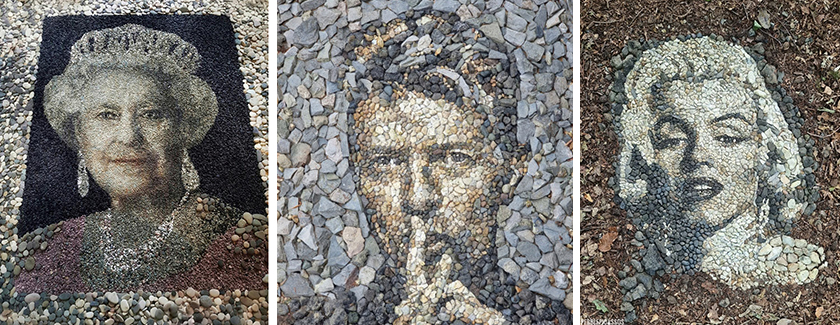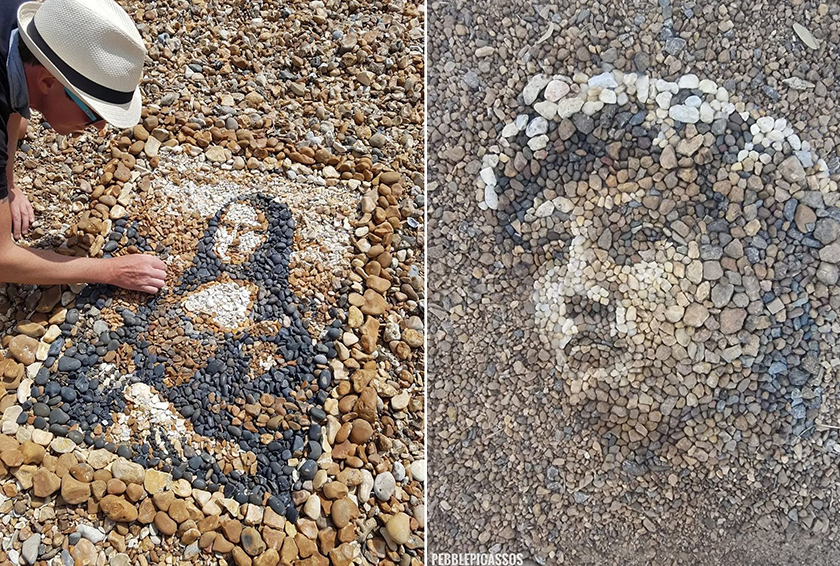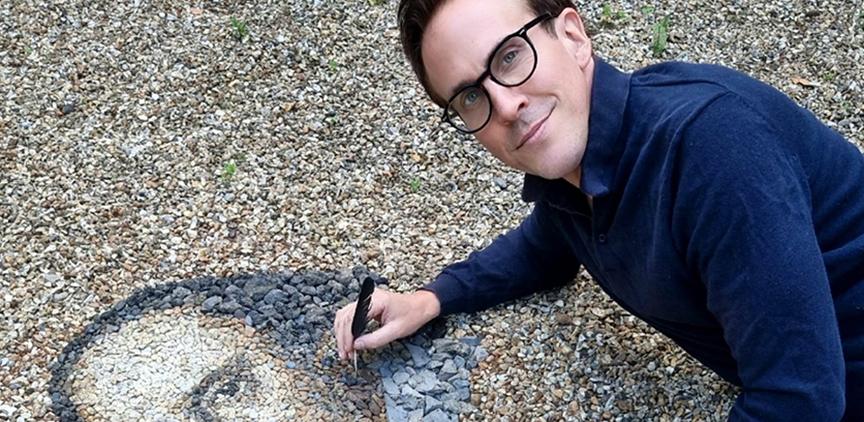The portraitist’s lifelike stone mosaics have attracted up to 36 million views on his Instagram @pebblepicassos.
Few people will ever see artist Justin Bateman’s actual work. And that’s exactly the way he wants it. Using found pebbles as his medium, his intricate mosaics exist only during the time of their creation. Soon after a portrait is completed, he returns the stones to their natural state.
It’s the most appropriate way to maintain the environment, according to the artist. “When I visit the forest or beach, I don’t want to see signs of human presence. I prefer to feel the closeness of nature and observe the networks of evolution, leaving no trace of my presence.”
The works themselves cover a broad spectrum – spiritual figures, political leaders, philosophers, celebrities, animals, artists, even iconic art.
The likenesses are remarkable, even uncanny.
Originally, subjects were selected by meditation, often derivatives of work exhibited in galleries. “It was fun to make what is considered ‘high art’ more accessible for everyone to experience. Increasingly, my subjects became identified through personal experience – encounters, requests and moments that left an impression on me.”

Most stones are found at Bateman’s chosen site, usually remote. “I will start to notice locations that have a great backdrop or add context to the work. If the work wants to be made, I will stumble across the exact gradient of stones I require.”
The technical process includes creating a color map, using anywhere up to 16-bit images. Locating the right stones can take several weeks, based on the project’s size and intricacy. “Once I have the materials, I do some tests, usually starting with the eyes to see if I can capture their character,” he said. “If the eyes don’t work, the piece cannot be made.”

Projects take five days to five weeks to complete. Because he’s in nature, things can easily go downhill. “Animals, weather, anything can happen because the little stones are not fixed in place.”
Each creation is a new experience.
“It may be the satisfying way each stone interlocks, leading to a technically proficient outcome, or reaching flow state, where time disappears and I’m content simply in each movement.”

A native the United Kingdom, the artist calls himself a minimalist and a nomad – for good reason. Following a motorcycle accident, he decided to travel indefinitely. While convalescing at the beach in 2019, he encouraged a friend to help him make the Mona Lisa out of stones. “It was great fun and a nearby family was thrilled by the result. We named it ‘The Stona Lisa’ and posted it on social media, which led to some viral activity, news features and a radio interview.”
For now, Bali, Indonesia is home base. Yet he continues to explore the world, sharing his portraits along the way.
“With a little imagination, you can turn very simple things into something beautiful or poetic, and you can create high art using everyday objects,” Bateman said. “If you can use a mobile phone, you can make art.”

